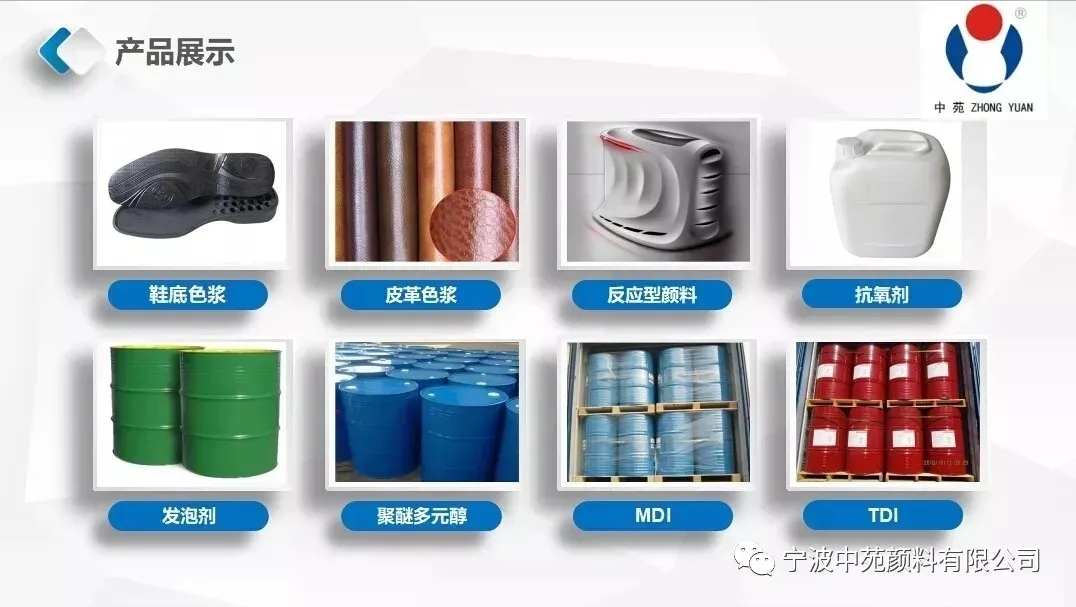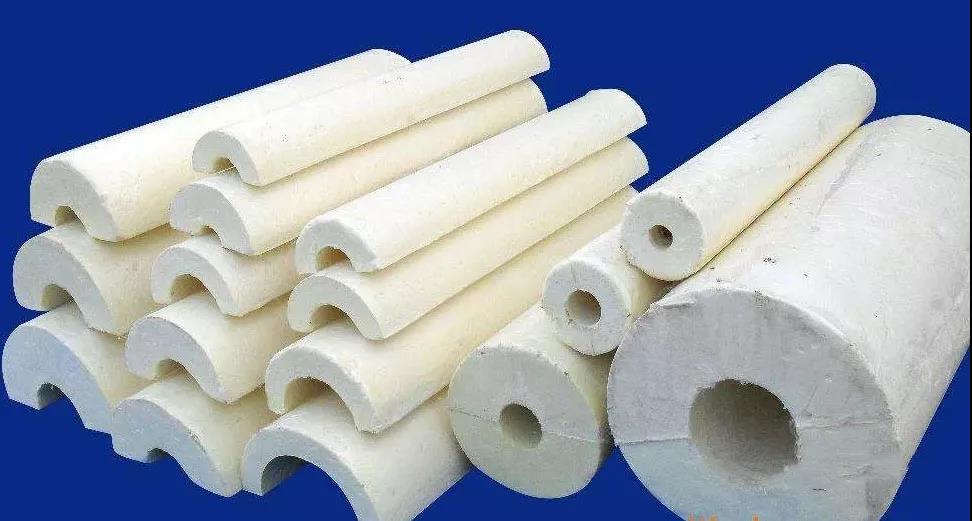
Color paste, as the main auxiliary agent used in polyurethane foaming, is widely used in various polyurethane materials. Our factory, as a professional polyurethane color paste manufacturer in East China, produces color pastes with high color density, good fluidity, large additions without affecting foaming, bright colors, and strong weather resistance.......

Polyurethane elastomers have both the high elasticity of rubber and the high hardness and strength of plastics. They have excellent wear resistance, excellent oil resistance, chemical resistance, flex resistance, and low temperature resistance. Polyurethane elastomer is an ideal material for manufacturing green tires and green tire manufacturing. Used tires can be recycled for other polyurethane products without causing environmental pollution。
1、New trends in product development
Polyurethane thermoplastic elastomer, also known as thermoplastic polyurethane rubber, referred to as TPU, is an (AB) block linear polymer, A is a high molecular weight polyester (1000-6000) polyester or polyether, B is containing 2- 12 straight chain carbon atom diol, the chemical structure between AB segments is connected with diisocyanate, usually diphenylmethane diisocyanate (MDI). Thermoplastic polyurethane rubber is cross-linked by intermolecular hydrogen bonds or lightly cross-linked between macromolecular chains. As the temperature increases or decreases, these two cross-linked structures are reversible. In the molten state or solution state, the intermolecular force is weakened, and after cooling or the solvent is volatilized, it is connected by a strong intermolecular force to restore the performance of the original solid. Polyurethane elastomer is a variety of polyurethane synthetic materials. Due to its structure with two segments of soft and hard, it can be molecularly designed to give the material high strength, good toughness, wear resistance, oil resistance and other excellent properties. Because of its extremely excellent performance, it is widely used in many fields such as automobiles, construction, mining, aerospace, electronics, medical equipment, sports products, etc., and has become a promising synthetic material product.
Another new grade product launched by AES Company can ensure the consistent appearance of automobile parts made of different thermoplastic materials or rubber materials. Through the cutting process, the appearance of the component can be adjusted to form a smooth, bright or matte appearance. When used in the manufacture of molded sealing strips, the product also has the following advantages: easy injection, especially suitable for parts with complex geometry; excellent sealing performance; has high flow characteristics, can form a bright surface; excellent elastic recovery, can be the largest Limit the warpage of components; strong adhesion. In addition to improving the exterior coordination of automotive exterior parts, this type of adhesive injection-grade products also have the common advantages of TPV, such as: low density, reduced component quality, excellent aging resistance, extended component life, and reduced compression deformation, and Adapt to a wide temperature range. The global annual consumption of thermoplastic elastomers (TPE) amounts to 2.26 million tons. In order to better grasp this huge business opportunity and meet market demand, international rubber and plastics manufacturers have actively developed various new thermoplastic elastomer products. Thermoplastic elastomer products have a wide range of applications, but the most significant growth is in the automotive and medical markets.
2、Main performance characteristics
Polyurethane elastomer is a typical multi-block copolymer. The molecular chain is composed of flexible segments with a glass transition temperature below room temperature and rigid segment blocks with a glass transition temperature above room temperature. Among them, oligomeric polyols constitute flexible segments, diisocyanates and small molecule chain extenders constitute rigid segments. The block structure of the flexible segment and the rigid segment determines the particularity of its performance:
(1)Ordinary rubber hardness range is generally Sauer A20-A90, plastic hardness range is about Sauer A95-Sauer D100, and polyurethane elastomer can reach as low as Sauer A10, as high as Sauer D85, and does not require filler assistance ; (2) Higher strength and elasticity can still maintain higher strength and elasticity in a wider hardness range; (3) Excellent wear resistance, 2-10 times that of natural rubber; (4) Excellent resistance to water, grease and chemicals; (5) High impact resistance, high fatigue resistance and vibration resistance, suitable for high frequency flexion applications; (6) Good low temperature resistance, low temperature brittleness is about -30℃ or below -70℃; (7) It has excellent thermal insulation performance. Due to its low thermal conductivity, it has better thermal insulation effect than rubber and plastic; (8) Good biocompatibility and anticoagulant performance; (9) Excellent electrical insulation, mold resistance and UV stability.
Polyurethane elastomers can be formed by plastic mixing, kneading and vulcanization processes like ordinary rubber, or they can be cast, liquid centrifugal or sprayed in the form of liquid rubber, and can also be made into granular materials, which are injected, extruded and calendered. , Blow molding and other processes. In this way, not only the working efficiency is improved, but also the dimensional accuracy and appearance of the product are greatly improved. Pouring with the casting machine also avoids the hidden defects that may be caused by manual pouring, and greatly improves the service life of the product.
Polyurethane elastomer is not perfect, its main disadvantages are:
(1) The internal heat is large, and the high temperature resistance is general. Normal operating temperature range is -40-120℃. If long-term action under high-frequency oscillation conditions or high-temperature conditions is required, corresponding modification measures must be taken in structural design or formulation.
(2) Not resistant to strong polar solvents and strong acid and alkali media. At a certain temperature, alcohol, acid and ketone will swell and degrade the polyurethane elastomer. Chloroform, methylene chloride, dimethylformamide, trichloroethylene and other solvents will swell the polyurethane elastomer at room temperature.
3、Common functions and application areas
Due to the unique function of polyurethane elastomer, as a polyurethane elastomer polymer material with excellent performance, it has been widely used in people's daily life, industrial and agricultural production and many other fields.
(1) Castable polyurethane elastomer (PU) is a new material between rubber and plastic. In practical applications, it is mostly used as a replacement product for rubber products. Due to excellent wear resistance (the best among elastomers), high strength (3-5 times that of ordinary rubber), high elongation (500%-1500%), high elasticity (large load support capacity, shock absorption) Good effect), wide hardness range (Shore A20-Shore D70); and also has excellent properties such as oil resistance, acid resistance, alkali resistance, radiation resistance, etc., and outstanding wear resistance, so there are many occasions where the wear problem is serious Important uses, especially in the mining, oil, and natural gas industries. The applicable fields of cast polyurethane elastomers are: solid tires; printing and conveying rubber rollers; pressure rubber rollers; oil seals, gasket ball joints, bushing bearings; o-rings; support pads; soles, back roots, baotou; lining; gears Wait. The hardness range of the selected elastomer is different in different application fields. Applications in mining, metallurgy and other industries include sieve plates, shakers, etc.; applications in the machinery industry include rubber rollers, tapes, seals, etc.; applications in the automotive industry include tires, seals, etc.; applications in the light industry There are polyurethane sole material, polyurethane synthetic leather, polyurethane fiber; in the construction industry, applications include waterproof materials, pavement materials, potting materials, etc.
(2) Polyurethane foam material is currently the best thermal insulation product among all the wall thermal insulation materials, and also the most forward-looking thermal insulation material in the world. It has light weight, thermal insulation, moisture resistance, sound insulation, heat resistance, shock resistance, Excellent performance such as corrosion resistance, easy bonding with other materials, and no droplets when burning. Widely used in building roofs, walls, ceilings, floors, doors and windows, etc. as thermal insulation materials. Polyurethane rigid foam is mainly used in industries such as heating, refrigeration, petroleum, chemical industry, automobile, and transportation in my country, and its share in building wall insulation is less than 10%.

(3) The polyurethane elastomer and the metal skeleton are firmly bonded, with large bearing capacity, wear resistance and oil resistance. It can be used to manufacture rubber wheels widely used in various transmission mechanisms, such as: supporting rollers, guide wheels for production line conveyor belts, pulleys for cable cars, etc. For sports and entertainment, high-end roller skate wheels and scooter wheels are made of polyurethane. Polyurethane rubber wheels also have the characteristics of oil resistance, good toughness, and strong adhesion. They are very effective in mining monorail cranes, rack rail cars, cleaning cars and other vehicles. Polyurethane is also used for very small electronic and precision instrument transmission wheels, various universal wheels, etc. The use of PU elastic inner lining mold can reduce the production cost, and it can be used in ceramic tile and ceramic production lines to improve production efficiency and yield. The urethane mold can be used to reproduce various patterns and produce decorative blocks. In the stamping production of metal molds, polyurethane elastomer rods, tubes and plate pads are used as buffer members instead of metal springs. The elasticity is high, the flexibility is high, the original shrinkage deformation strength is high, and the mold is not damaged.
Coal mines, metal and non-metal mines are in great demand for non-metallic materials with high wear resistance, high strength and elasticity. Polyurethane elastomer products used in mines include sieve plates, elastomer linings, and transport belts. Others such as cyclones used to make solids separation, flame-retardant and anti-static wear-resistant conveyor belts, solid core wheels of mine monorail cranes, coal mine spraying machine coupling plates, oil seals on 10,000-ton electric wheel dump trucks Rings, cold patching of high-voltage cable jackets, etc.
4、Polyurethane thermoplastic elastomer
Thermoplastic elastomer is abbreviated as TPE/TPR, with SEBS and SBS as the base material, it is a kind of polymer alloy material with general plastic processing performance, and the product has similar cross-linked rubber performance. In multi-material molding, there are four basic types of thermoplastic elastomers, namely styrene block copolymer (SBC), thermoplastic vulcanizate (TPV), thermoplastic polyurethane (TPU) and copolyester (COPE). Thermoplastic polyurethane elastomers, like cast polyurethane (liquid) and compounded polyurethane (solid), have high modulus, high strength, high elongation and high elasticity as well as excellent wear resistance, oil resistance, low temperature resistance and aging resistance Wait.
TPU can be classified according to different methods. According to the soft segment structure, it can be divided into polyester TPU, polyether TPU and polybutadiene TPU, which contain ester group, ether group or butenyl group respectively; according to the isocyanate structure used, it can be divided into yellowing type (MDI, TODI, NDI, PPDI, etc.) and non-yellowing type (HDI, H12MDI, etc.) are divided into urethane type and urethane urea type according to the hard segment structure, which are obtained by diol chain extension or diamine chain extension, respectively. According to the presence or absence of crosslinking, it can be divided into full thermoplastic and semi-thermoplastic. The former is a purely linear structure without crosslinks; the latter contains a small amount of crosslinks such as allophanate.
Polyurethane-based thermoplastic elastomers that contain more urethane (—NH—C—O—) structural units in the main chain are commonly known as polyurethanes (referred to as polyurethanes). Thermoplastic polyurethane elastomers are a type of polyurethane rubber, whose macromolecular chain structure is composed of polar polyurethane or polyurea segments (hard segments) and aliphatic polyester or polyether segments (soft segments) alternately. Hydrogen bond crosslinks between molecules and light crosslinks between macromolecular chains make this polymer material plastic. This cross-linked structure has plasticity as the temperature changes. There are two types of thermoplastic polyurethane elastomers, polyester type and polyether type. High hardness, good wear resistance and good elasticity are the most outstanding properties of this type of elastomer. In addition, the tensile strength, tear strength, chemical resistance and environmental resistance are also excellent, and the mechanical properties of some materials increase with the increase of hardness. The relative density of the thermoplastic polyurethane elastomer is generally 1.10-1.25, and the Shore hardness is 65A-80D. Polyether polyurethane has better low temperature resistance than polyester polyurethane.
Thermoplastic polyurethane elastomers are the first elastomers that can be processed using thermoplastic processes. Polyurethane rubber has good wear resistance, additives can improve its weather resistance, dimensional stability and heat resistance, reduce friction or increase flame retardancy, they have a wide range of applications in various hardness grade products, involving automotive seals and Washers, stabilizer sleeves, medical catheters, pacemakers and artificial heart devices, mobile phone antenna gears, pulleys, sprockets, chute linings, textile machinery parts, casters, washers, diaphragms, couplings and vibration damping parts.
5、Development prospects and trends of polyurethane elastomers
The global consumption of polyurethane rubber elastomers has increased rapidly year by year. Foreign authoritative institutions predict that the world will maintain a growth rate of 7%-8% in the next few years. Among them, the automotive industry and the shoe industry are the main consumer markets for polyurethane elastomers, and the fastest growth in consumption Two areas. The main manufacturers of polyurethane elastomers in the world are: American Goodrich, Mobay, Dow Chemical, Huntsman, Bayer of Germany, Asahi subsidiary of Japan, Concord Fermentation, NOK, etc. Among them, Bayer and Huntsman are mainly shoe-making materials, while Dow Chemical, Asahi Glass Company, NOK and Xiehe Fermentation are mainly automobile mechanical parts. At present, these major production companies continue to introduce new varieties to expand into the surrounding fields.
The demand for polyurethane in the domestic market is increasing year by year, but some key raw materials still mainly rely on imports, which restricts the development of the polyurethane industry. my country should accelerate the localization of key raw material production and produce raw materials with excellent performance and low prices. The study of alloying of polyurethane elastomer materials has also become a hot topic in polymer materials research in recent years. Polyurethane elastomer can be compounded with various synthetic resins such as PVC, PE, ABS, etc. to reduce cost and improve performance. Polyurethane elastomers can also be modified by adding some organic fillers to highlight or strengthen certain aspects of performance, or overcome some of the disadvantages of polyurethane elastomers to meet special needs.
With the increasing requirements for polyurethane elastomer products and the enhancement of people's environmental awareness, the development of new aliphatic polyisocyanates has also become an urgent research topic. Technicians use the natural structure and characteristics of biological resources to produce polyurethane elastomer products that can be decomposed by microorganisms like wood. At present, some companies in Japan mix natural raw materials such as wood flour, sucrose and waste coffee with polymer polyols to prepare polyurethane elastomers, which can not only reduce the consumption of polyols, reduce production costs, but also confer biodegradability on products. A certain number of commodities have appeared.
In recent years, research on liquid crystal polyurethane elastomers has been relatively active, mainly focusing on the selection of raw materials, optimization of process routes and improvement of physical properties. Liquid crystal polyurethane is made of rigid mediators and flexible spacers, which is a polyurethane elastomer with liquid crystal properties in the melt state. The material has good mechanical, thermal stability, high elasticity, high elongation and processing properties. The synthesis of liquid crystal polyurethane elastomer can adopt one-step or two-step polymerization method, with various processing and molding techniques, including extrusion, injection, molding and coating. Blending modification of synthetic materials has become one of the current research and development priorities of polymer compounds. Polyurethane elastomers can be blended with various synthetic resins such as PVC, PV, PE, ABS, etc. to reduce production costs and improve physical and processing. performance.
Environmental protection is another major problem facing the rising polyurethane industry. With the increasing use of polyurethane materials in the national economy, the amount of use is getting larger and larger, and the recycling of its waste has also been paid more and more attention. The waste polyurethane mainly includes the corner scrap of the production plant, mold overflow material, scrapped automobile, refrigerator polyurethane foam and elastomer waste shoe soles and waste PU leather, spandex old clothes, etc.
At present, there are three main methods for recycling polyurethane: physical method, chemical method and energy method. For the recycling of waste polyurethane products, the European Union took the lead in promulgating laws and regulations on the recycling of waste plastics for electrical products: who produces and who recycles. my country should also speed up the recycling of polyurethane products, especially foam products.
As a new type of material, polyurethane elastomer has been gradually applied to all walks of life, and its role is becoming greater and greater. With the development of the construction industry, people's awareness of environmental protection is gradually increasing, and the new technology of polyurethane elastomer is constantly Appearance, polyurethane elastomers will be more and more widely used in the construction industry.
![]()
![]()
We respect originality. The text picture material, the copyright belongs to the original author. Some articles could not be contacted with the original author due to various reasons. If the copyright issue is involved, please contact the original author to deal with it immediately.

Factory address: Longzhen Avenue, Longshan Industrial Zone, Cixi, Ningbo
Marketing Center: 1308 Yaojiang Xindu, Hongtang Street, Jiangbei, Ningbo
Phone: +860574-86501282-0
83096225 83096226
Fax: +860574-86501283
Website: http://zy-pigment.en.alibaba.com/